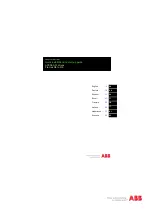
11-33
11
Vector Control
11.8.8 DROOP Function [90]
The DROOP function is used in applications of load distribution, where two or more inverter/motor sets run a load
that mechanically couples the motors, and in which little speed variations between the motors are acceptable.
For the application of the DROOP function, it is recommended that the sets used (motors/inverters) be equivalent
and present similar dynamic responses.
This function acts as a speed regulator on the open loop control method, reducing the inverter output speed
as the motor torque current increases.
P0333 – DROOP Factor
Adjustable
Range:
-10.0 % to 10.0 %
Factory
Setting:
0
Properties:
Vector
Access groups
via HMI:
01 PARAMETER GROUPS
29 Vector Control
90 Speed Regulator
Description:
The step velocity produced by DROOP is determined by P0333, adjusting values less than zero, ie, -10.0 % to -0.1 %.
For values of P0333 greater than zero will increase the speed of the inverter output as the torque current increases.
The effect of P0333 on the speed reference is shown in the figure below.
(a) P0333 < 0
(b) P0333 > 0
Motor
speed
100%
Inactive Droop
∆
droop
Active Droop
(P0333 < 0)
Inactive droop
100%
Motor
speed
Active droop
(P0333 > 0)
∆
droop
100%
100%
Torque
Current
Torque
Current
Figure 11.6 -
(a) and (b) - Illustration of the DROOP function operation
P0334 – DROOP Filter
Adjustable
Range:
0.0 to 16.0 s
Factory
Setting:
0.2
Properties:
Vector
Access groups
via HMI:
01 PARAMETER GROUPS
29 Vector Control
90 Speed Regulator
Summary of Contents for CFW-11 Series
Page 2: ......
Page 54: ...2 4 2 General Information ...
Page 58: ...About the CFW 11 3 3 4 ...
Page 74: ...Inverter Model and Accessories Identification 5 14 6 ...
Page 86: ...Inverter Model and Accessories Identification 6 12 6 ...
Page 94: ...Available Control Types 8 2 8 ...
Page 118: ...VVW Control 10 8 10 ...
Page 182: ...Functions Common to All the Control Modes 12 26 12 ...
Page 220: ...Dynamic Braking 14 4 14 ...
















































